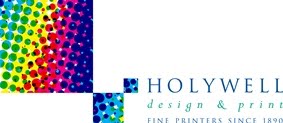Many
of us will still send a postcard back to the office or to friends at home when
we are away on holiday. Why choose this medium in a digital age? Well it’s effective,
it’s inexpensive, and the format allows us to convey as little or as much as we
like. From the recipient’s perspective, a postcard is personal, fun to receive,
quick to read and demonstrates that the sender is thinking about them. What’s
interesting is that all of these same attributes apply in a business context
too.
With
a little imagination, postcards can make a valuable contribution to your sales
and marketing effort, especially when they are used alongside other online or
offline communications, as part of a campaign. Over a period of time, postcards
can help to build awareness, develop relationships, and ensure your brand stays
front of mind.
Postcards
are a very versatile communication medium - use them to distribute a series of messages
over a period of time, or drip-feed a story in parts to create interest and intrigue
- we’ve worked on projects involving both these routes recently:
·
A client offering a high-tech service ran a
campaign using postcards designed to look like iPads. We printed a stock of
cards, leaving the ‘screen’ area clear to overprint digitally with a series of
messages which changed throughout the campaign. Printing all the postcard stock
in one go, but overprinting messages digitally was a cost-effective way of
enabling our client to tailor messages according to responses as the campaign
progressed.
·
Another client made very creative use of postcards
by designing a series based around a town centre street scene. While all postcards
showed the same view, the scene changed progressively over the course of
several mailings with shop fronts changing, lights coming on, cars moving and
so on.
Summer
is a great time to mail out postcards; here are a few basic things to keep in
mind as you plan how to use them in your next campaign:
- Grab attention with an eye-catching image and a strong headline
- Be clear about why you are making
contact – don’t just list your services.
- Have a strong call to action – say
clearly what you want the recipient to do next!
- Consider using a ‘handwritten’ font
to give more personality to your communication.
- Be sure to use other communication
channels in conjunction with postcards.
We’re
sure you will have plenty of ideas on how you might use postcards to boost your
sales and marketing, but if you’d like some help developing creative concepts;
our studio is brimming with inspiration!
If you’ve found this blog useful, why not subscribe to our monthly newsletter for more – click here!











